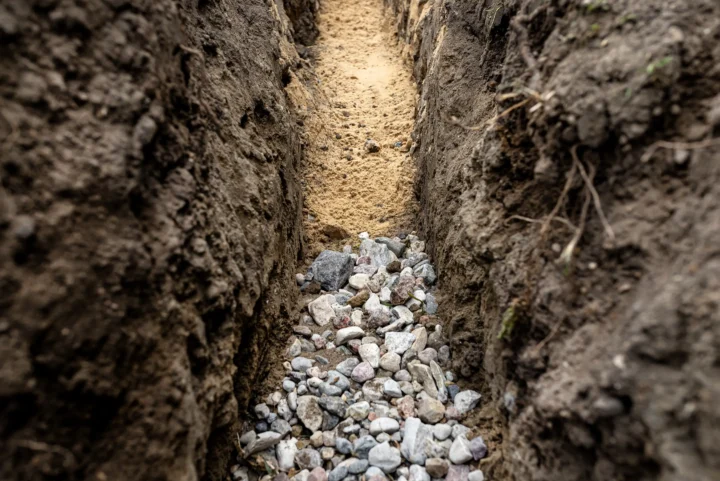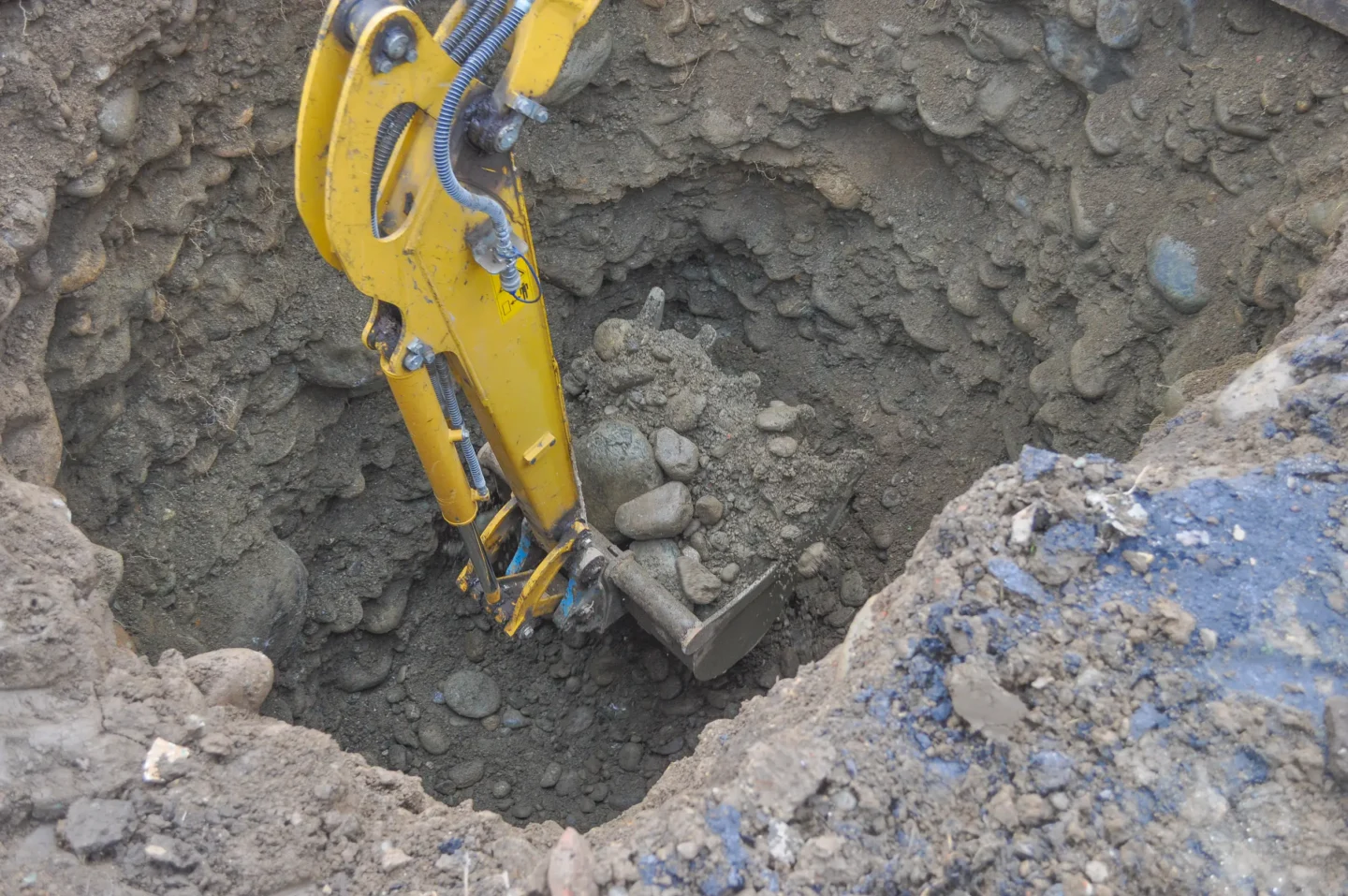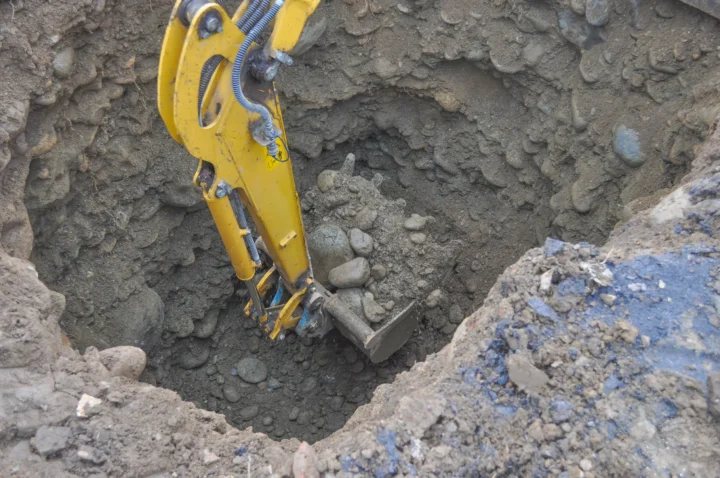See It Drain Away (Hopefully!)
On sites where soakaways might be feasible, the next step is to confirm what the ground conditions are and if soakaways are going to be practical and assess the size of soakaway that would be needed.
If the ground conditions are favourable, soakaway tests are carried out to measure the permeability of the strata. Quite literally, it involves filling up a trial pit with water and measuring the rate that it drains away.
Initial falling head permeability tests can also be undertaken in a borehole before committing to full scale soakaway tests if needs be.
Because the permeability can vary within a strata it’s always beneficial to do soakaway testing in the actual area where it is proposed to install soakaways. That way we get test data from the actual area where soakaways would be installed.
Wherever possible it’s good to do multiple soakaway tests at each location; three is always a magic number! But if permeability is low one test is usually enough to calculate a design permeability.
What Happens Next? The Soakaway Investigation Steps
This is just placeholder text. We will change this out later. It’s just meant to fill space until your content is ready. Don’t be alarmed, this is just here to fill up space since your finalized copy isn’t ready yet. Once we have your content finalized, we’ll replace this placeholder text with your real content.
After doing the soakaway investigation fieldwork, the data is used to calculate a design permeability for each soakaway test.
After doing the soakaway investigation fieldwork, the data is used to calculate a design permeability for each soakaway test.
After doing the soakaway investigation fieldwork, the data is used to calculate a design permeability for each soakaway test.
Will Soakaways Work For My Site?
If you’re thinking about installing soakaways and want to know if they’re suitable, If you’ve been asked to do soakaway testing and investigation as part of drainage design, we’re always here to help guide you through the process and discuss what to do next.


